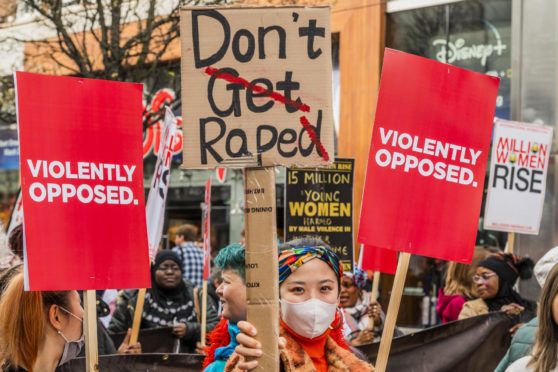Yesterday, Wednesday 25 November, was International Day for the Elimination of Violence Against Women. It was the first day of sixteen days of activism against gender violence. This is a global campaign sponsored by the United Nations.
These days, and the movement they are meant to encourage, began in 1991. Sadly there is still a very long way to go to make the lives of the majority of women in the world safe. So many years, and so little achieved. I find this depressing and disheartening.
One way of describing how much still needs to improve is to describe violence against women using numbers. There are numbers from this year from this year of pandemic that can help us. For example, more than half of young women and girls in the UK were harassed on the streets during the summer months.
In the early months of lockdown, a fifth (19%) of girls and young women aged between 14 and 21 experienced being followed, groped, catcalled, flashed or upskirted. In the summer months, when the population was out and about more in public spaces, this increased to over 50%. These are shocking figures, and speak of a culture in the UK which is unsafe for girls and young women. It is threatening for them and very worrying for their parents. For these incidents, more than three quarters of young women (76%) did not report them to the police. This behaviour is something women learn to live with.
While women are unsafe outside, many are certainly not safe in their own homes. The United Nations has described violence against women, particularly domestic violence as ‘the shadow pandemic’. Being locked-down with a partner or family member who is violent and abusive has been the defining experience of this year for many.
Published yesterday was the Femicide Census, which examines the killings of women aged 14 to 100 years at the hands of men in the ten year period 2009-2018. In the Census, femicide is described as ‘men’s fatal violence against women’. On average in the UK, a woman is murdered every three days.
While it is clear that patterns of male violence continue, and may well be escalating, we should note how this culture of violence can make women feel. It is not just that many women live in fear, as upsetting as this is. Many women, maybe the majority, carry with them the sense that in some way they are to blame, that they have brought violence upon themselves through something they have done.
Events across north and north-east to tackle domestic violence during international campaign
Girls and women can feel this when their appearance and behaviours are questioned, and they are made to carry the responsibility for what has happened to them. Maybe it was because of how they were dressed, maybe they were too loud or too assertive, maybe they did not know their place or keep to quieter traditional roles. Often the suggestion comes, if women modified their behaviour then things would be better.
And women do change their behaviour; learn how to dress differently than they would choose, learn how to avoid eye contact, learn how to stay quiet. Women have been doing this for decades, but the numbers relating to abuse and violence increase.
So, first of all they experience an abusive act, and then they carry the blame. We need to remember that the vast majority of abuse experienced by women, from upskirting to physical violence including murder, is illegal. These acts of violence are crimes and are never acceptable. However, again and again I hear it said ‘well, what did she do to provoke him?’. There is never a circumstance where the acceptable response is abuse or violence. Never.
In these sixteen days, when women around the world are speaking about these things to raise awareness of the seriousness of this shadow pandemic, we will be remembering that very close to all of us, in our friendship groups, in our places of work, in our churches and places of worship, there are women who are feeling guilt and shame because of abuse they are experiencing. These feelings wreck lives, they prevent adult women living with confidence, they inhibit women from thriving and becoming the people they could be.
Enough of this. Let us speak about these things publicly, and actively try to understand why some men need to exercise physical and emotional control over women in order to feel better. Our aim is that by this time next year things are better than they are today.
The Rt Rev Anne Dyer is Episcopalian Bishop of Aberdeen and Orkney and Scotland’s first female bishop











